Wing Commander Alexander Nelson Cole
Until very recent times this period in Anglo-Irish relations was a cause of continuing bitterness and deep feelings on both sides of the Irish Sea. While these feelings had largely slipped out of public awareness in Great Britain, it is not overstating the matter to note that an Irishman's membership of the British Armed Forces could be a matter of significant public disapproval and even physical assault in Ireland. Many families were divided by the question, including that of Jack Tully-Jackson, who suffered for his decision to join the RAF Regiment.
However, in May, 2011, the Queen was invited by the Irish President Mary McAleese to make the first state visit of a reigning British monarch to Ireland in a hundred years. This was a very significant gesture of reconciliation by both governments and the Queen's visit was of crucial importance in the slow erasure of destructive memories, especially in Ireland where, as stated, it remained a live topic. Irish society was, until recent years, both slow changing and conservative, but 21st Century Ireland is not the same as its 20th century forebear.
Once this visit had taken place it was possible to make the first significant public moves towards relegating this topic to the realm of dispassionate research, uncontentious popular discussion and commemoration. This is an ongoing process. The Irish people are beginning to fill a gap in the national consciousness and many now remember the sacrifices of all sides of the wartime generations with a measure of pride.
This can be seen in the creation of a slowly growing number of public war memorials, long absent from the Irish countryside though present in the North of Ireland in substantial numbers. An example, pictured below, a memorial garden at Woodenbridge, was opened in September, 2014, to commemorate the 1,192 men from County Wicklow who died in the First World War. Dead from the Second World War have fewer significant local memorials but are commemorated, for example, in the Irish National War Memorial Gardens in Islandbridge, Dublin, and in many memorials inside churches.
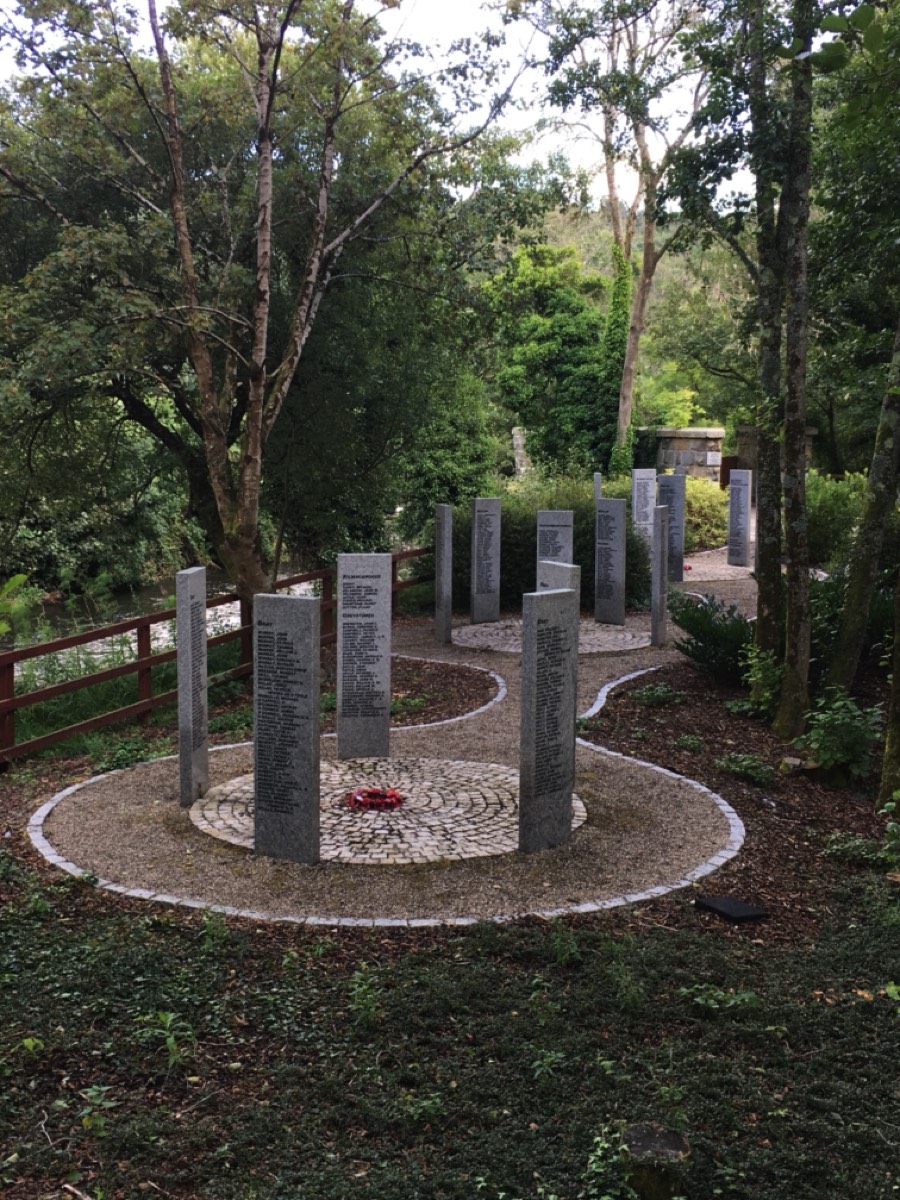
First World War memorial in Woodenbridge, Co. Wicklow.
D. Haire
The neutrality of Southern Ireland in World War Two arose out of the struggle first between the political ideologies of Unionism and Nationalism (the 1916 Easter Rising and the War of Independence, 1921-22) and second from the internecine conflict between moderate and more extreme Irish nationalist forces during the Irish Civil War, 1922-23. It is one of the more interesting twists in History that Eamon De Valera, who had been a leader of the rebels during 1916, who had opposed the acceptance of the partition of Ireland and who had fought in and lost the Irish Civil War, ultimately managed to create and to lead his own political party, Fianna Fail, into power. It was Britain's misfortune that he was Taoiseach [Prime Minister] when war broke out in 1939 and that he was still actively working to obtain both Eire's full sovereignty and an end to partition.
Fresh from over twenty-three years of a struggle to secure Irish independence, De Valera committed Southern Ireland (or Eire) to neutrality and thereby came close to prompting Churchill to seize strategically important Irish ports by force, the possession of which would have made a considerable positive difference to the coming Battle of the Atlantic. He was even offered the British Government's support to end Partition but refused the offer believing it a promise never likely to be kept.
Taking a radically different approach, Unionists, in both parts of Ireland, strongly supported Great Britain and used the war as a means of proving their loyalty to the Crown, just as they had done in 1914-18. Many who did fight for the British Forces did so feeling that they knew where they stood as individuals in the fight against Fascism.
This short sketch of a complex and multi-faceted situation is intended to set the background to the story of an Irishman who did fight for the British Armed Forces against Nazi Germany and who, like so many, gave his life in that struggle.

Wing Commander Alexander Nelson Cole
Service number 37005
'Paddy' Cole was, as his nickname suggests, one of the estimated 60,00 - 70,000 Southern Irishmen who fought for Britain in the Second World War. He was born and raised on the west coast in Sligo, the eldest son of John Charles and Emma Isabella Cole. John Cole was a member of Sligo Corporation for many years in the forties and fifties. Nelson and his brother, John Charles Cole, were schooled as borders in St Andrew's College in Dublin and Nelson continued his studies in Trinity College, in the same city. However, he didn't complete his studies being, as his brother described him: "..always restless for action - [and, like Peter Burnell-Phillips, favouring] a fast motor bike as a very young man,…"
According to his obituary in the London Times, he joined the R.A.F. in 1934 [other sources say in 1936] and served in India in 1937-38, having obtained his wings in 1937. He took part in the campaign in Waziristan when British Indian forces fought a campaign against the unrest fomented by Mirzali Kahn. While in India he married Elizabeth Power in 1937. She later set up home in Sticklepath, Devon.
For a time he served aboard the aircraft carriers, Ark Royal and Furious. We, as yet, know little about Nelson's service record during the Second World War, though he was in charge of forming the first Norwegian Fighter Squadron [perhaps 332 Squadron] before being moved into training duties. Thus he came to be Chief Flying Instructor with 60 OTU at East Fortune.
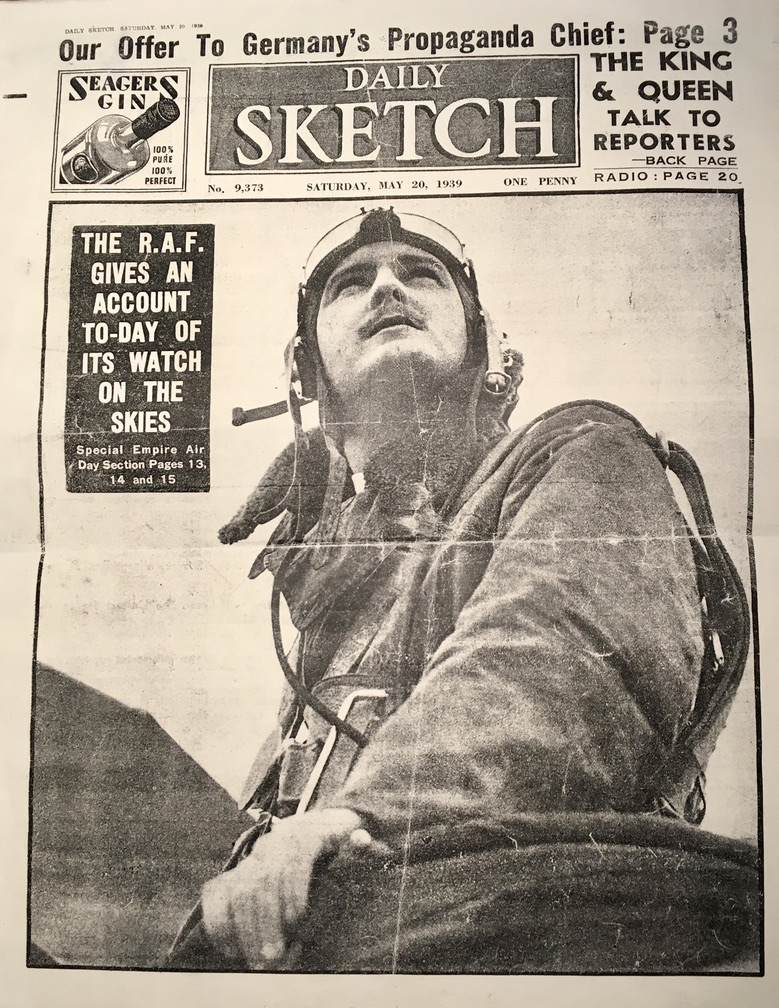
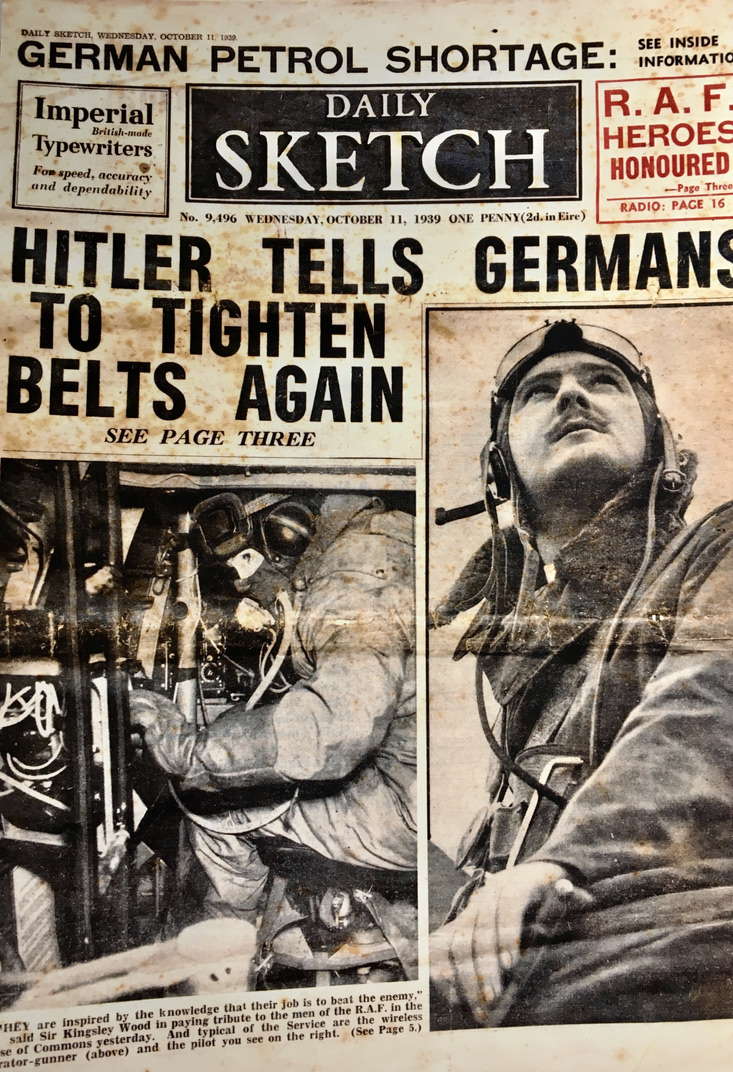
This photograph of Nelson Cole was twice used by the Daily Sketch on May 20th and October 11th, 1939. Cole was clearly a pleasing image to represent a pilot of the RAF.
Courtesy of Angus Robson.
On the Tuesday, 24th February, 1942, Nelson Cole took off alone in Master III W8623. An example of this training aircraft is shown below. It does not appear that he was performing any specific training task and in the course of his flight he may simply have misjudged a manoeuvre which resulted in him crashing into the ground on the airfield. He was twenty-nine years old.
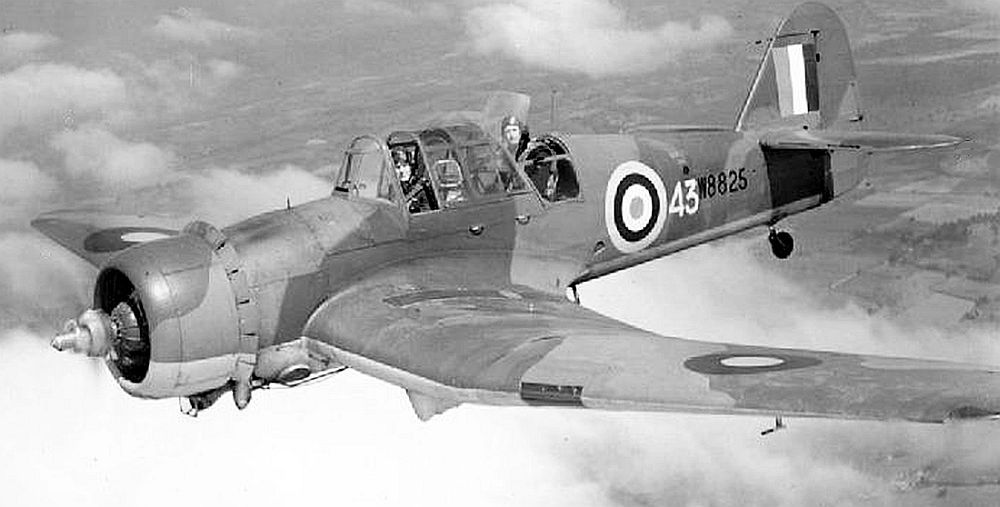
Miles Master III
Wing Commander Cole appears to have been a very popular person. The Times obituary records a correspondent who wrote the following about him: "Wing Commander Cole was a brilliant officer possessing great organising ability. He worked tirelessly in whatever sphere he found himself, and was exceedingly popular with all those with whom he made contact."
The station's Church of Scotland Padre, Lewis A Sutherland, wrote to his mother on the 27th February and said:
"…You will already have received word of [your son's] death through a flying accident,… We laid him to rest this afternoon with full service honours, and we all felt that we had parted on this earth with one who exemplified in his own life all that was finest and truest in the Royal Air Force. I had known your son for some time, he having been previously on my station in another squadron and we were very close friends. Just a few hours before he was called up Higher, we had a very happy talk together in the Officers' Mess, chiefly about the influence a Chaplain could exercise in the life and well-being of the men, and his views on this, as on other subjects, were most stimulating and helpful. I can truly say that he was beloved by all ranks, for his happy nature, his devotion to duty and his intimate care for all under his command. His going leaves a great blank in the station, and I want you to know how great a place he filled in our hearts. The Church of England Chaplain and I officiated at the funeral service today."
In a postscript, the Chaplain wrote: "I think these lines, by an unknown poet, sum up your boy:
'Shall an airman's death be reckoned
Only a mere dying?
Say rather! God beckoned,
And his spirit went on flying.'"
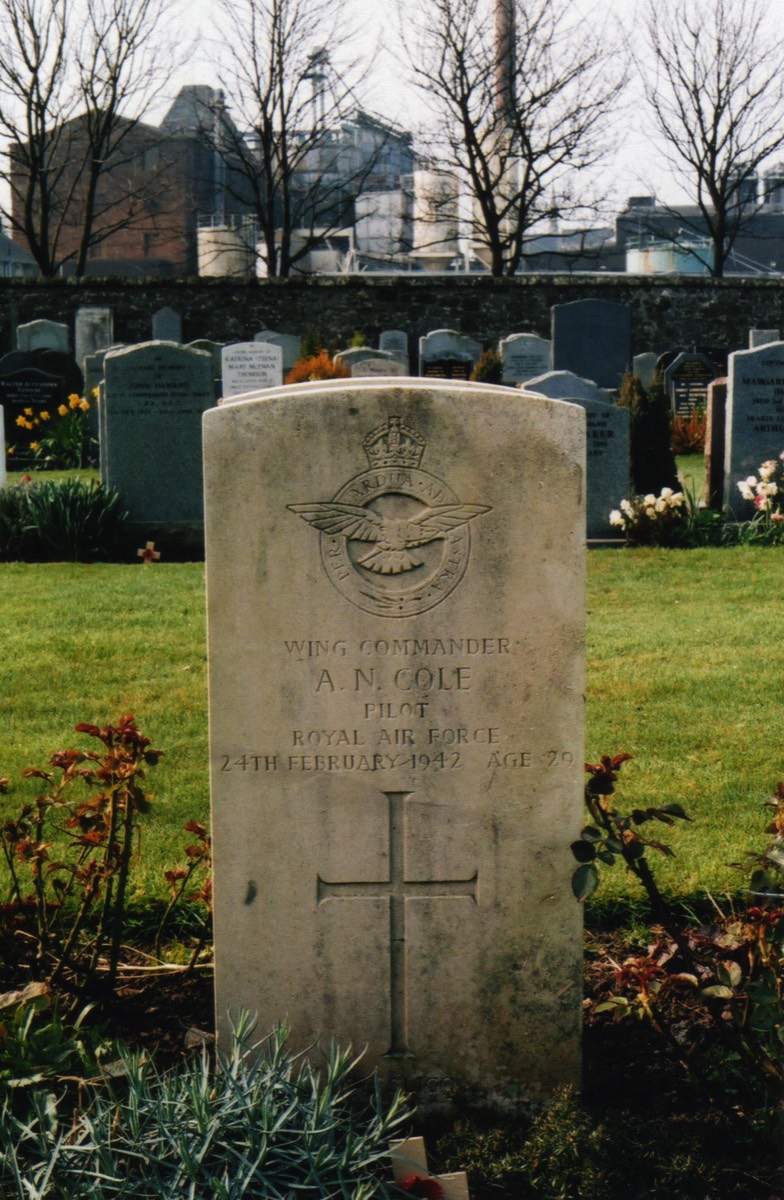
W/C Cole's gravestone in Haddington St Martin's.
He was the highest ranking airman buried in this cemetery.
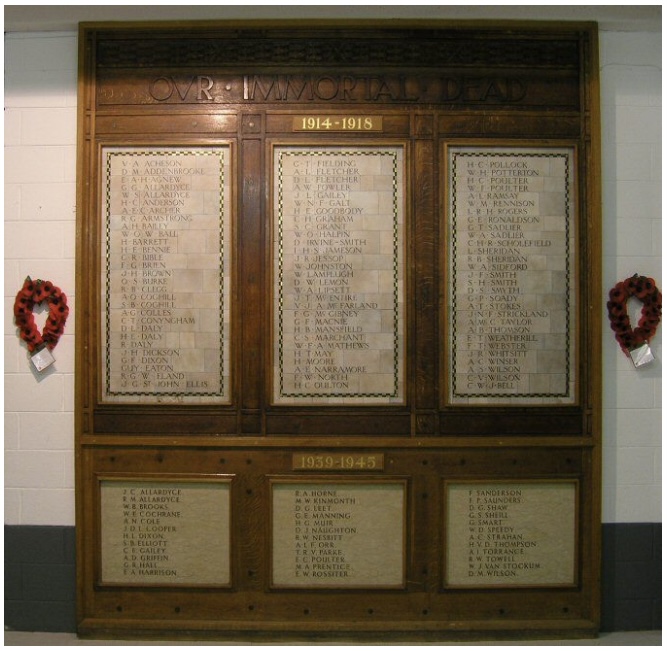
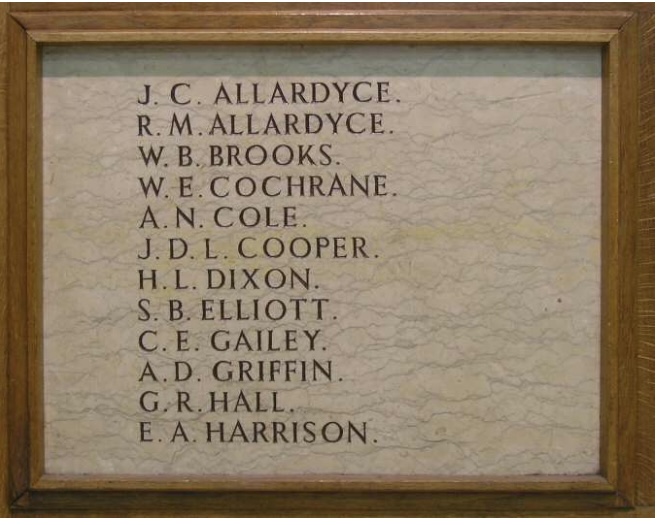
Wing Commanger Cole is commemorated on the war memorial in his former school of St Andrews in Dublin. The number of names inscribed here gives a small but telling indication of the contribution in lives given by the Irish people during both World Wars.
[My thanks to John Ingram, Board Adviser and former pupil of St Andrews, for these two photographs]

